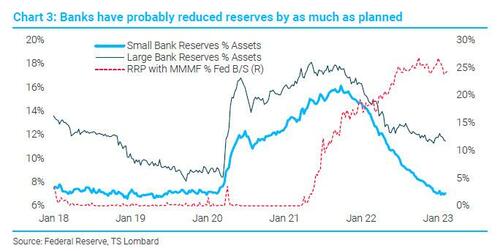UK On “Cusp” Of Deal On Post-Brexit Trading Terms In Northern Ireland: Deputy PM
Authored by Alexander Zhang via The Epoch Times,
Britain is “on the cusp” of securing a new deal with the European Union on post-Brexit trading terms in Northern Ireland, Deputy Prime Minister Dominic Raab says.
Deputy Prime Minister Dominic Raab arrives at BBC Broadcasting House in London on Feb. 26, 2023. (Stefan Rousseau/PA Media)
The UK has been holding talks with the EU to fix issues with the so-called Northern Ireland Protocol for some time, and speculation has been mounting that the two sides are close to an agreement on the future of the controversial trading arrangement.
Appearing on Sky News on Feb. 26, Raab confirmed that “there is real progress” and suggested “there will be good news in a matter of days, not weeks.”
The Cabinet minister later told the BBC, “If we can get this over the line—we’re on the cusp, we’ve made great progress, we’re not there yet—this would be a really important deal.”
Prime Minister Rishi Sunak addresses participants at the Munich Security Conference in Germany on Feb. 18, 2023. ( Ben Stansall-WPA Pool/Getty Images)
Prime Minister Rishi Sunak has said his administration is “giving it everything we’ve got” to finalise the deal to fix issues with the protocol, which was negotiated and signed by former Prime Minister Boris Johnson.
Sunak, speaking to The Sunday Times newspaper, pledged to work to satisfy the demands from the unionist community in Northern Ireland.
“I’m a Conservative, I’m a Brexiteer, and I’m a unionist and anything that we do will tick all of those boxes, otherwise it wouldn’t make sense to me, let alone anyone else,” he told the newspaper.
‘Inching Towards Conclusion’
Leo Varadkar, the Irish republic’s “Taoiseach” or prime minister, also has expressed optimism over the negotiations.
Varadkar told RTE on Feb. 25 that he believes there is a possibility of an agreement in the next few days.
“Certainly the deal isn’t done yet,” he said. “But I do think we are inching towards conclusion and I really want to thank the UK government and the European Commission and the Northern Ireland parties for the level of engagement that they’ve done in recent months to get us to this point.
“I would just encourage everyone to go the extra mile to come to an agreement because the benefits are huge.
“They allow us to have the Northern Ireland Assembly back up and running in the north and the Good Friday Agreement working properly again, and also to put relations between the United Kingdom and Ireland and the European Union on a much more positive footing.”
But it remains unclear if the Democratic Unionist Party (DUP), the largest unionist party in Northern Ireland, will be satisfied with the deal.
The party has issued seven tests that Sunak’s new pact will have to meet in order to win its backing, including addressing what the DUP calls the “democratic deficit” of Northern Ireland being subject to EU rules while not having a say on them.
DUP MP Sammy Wilson told GB News it is a “red line” for his party that “no EU law” should continue to apply in Northern Ireland.
Mark Francois, chairman of the Conservative Party’s eurosceptic European Research Group, warned that it is a “practical reality” that, if the DUP does not agree with the changes Sunak has secured, then “it is simply not going to fly.”
Brexit Hangover
The Northern Ireland Protocol is part of the Brexit withdrawal agreement that was signed by former UK Prime Minister Boris Johnson and EU leaders to ensure the free movement of goods between Northern Ireland, which is a British province, and the Republic of Ireland, an EU member state.
The arrangements shifted customs and regulatory checks to the Irish Sea and created new red tape on the movement of goods between Great Britain and Northern Ireland, with trade in the region remaining subject to certain EU Single Market rules.
But the protocol has been fiercely opposed by unionists in the British province, who claim it has undermined the region’s standing within the UK.
Northern Ireland hasn’t had a functioning local government since February 2022, when the DUP withdrew from the power-sharing executive in protest against the protocol.
The DUP has pressed the UK government to act on unionist concerns around the effects of the protocol on trade between Great Britain and Northern Ireland, and on the union. The party said it will not reenter the devolved government until its concerns have been addressed.
On June 2022, the UK government published plans to override parts of the protocol, enabling ministers to establish a “green lane” so that trusted traders are allowed to move goods to Northern Ireland from Great Britain without checks, as long as the products remain within the UK.
But the EU has criticised the UK’s actions for breaking international law and undermining trust between the two sides. The bloc has since launched legal actions against the move.
The dispute could have led to a damaging trade war, with tariffs being imposed or even the suspension of the entire Brexit deal between the UK and EU.
Tyler Durden
Mon, 02/27/2023 – 02:00
via ZeroHedge News https://ift.tt/d0f9EMU Tyler Durden











